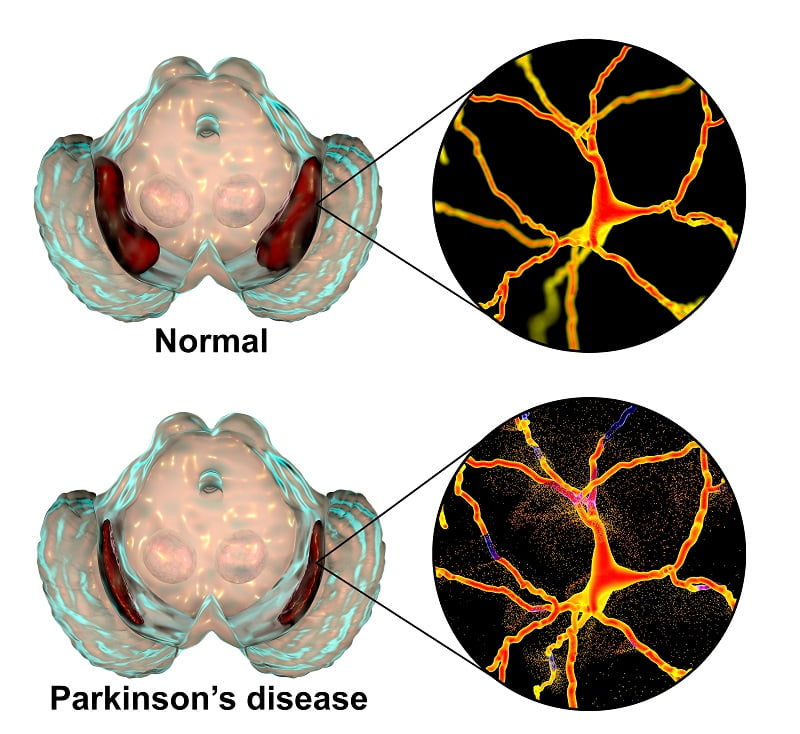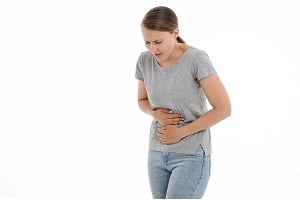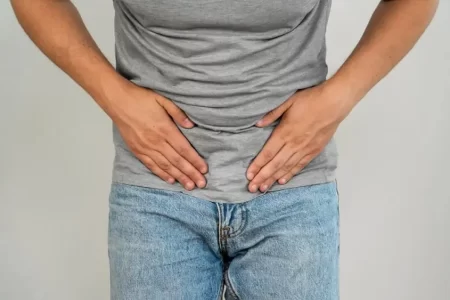Cystitis in Children
- Updated on: Jul 10, 2024
- 5 min Read
- Published on Apr 19, 2020

What is Cystitis?
Cystitis is a condition characterized by an inflammation of the lining of the bladder. The disease is caused due to bacterial infection in the urinary tract.
Bacteria enter the urinary tract through urethra and moves towards the bladder. They start to usually multiply when the bladder is not fully emptied even after going to the toilet. This is a type of urinary tract infection (UTI).
Cystitis is commonly found in girls because they have short urethra and the urethral tube is close to the bowel passage. This causes bacteria to travel easily from the bowel passage to the urine tube and up into the bladder.
Is Cystitis Common in Children?
Cystitis is common in children. Normally, all children have some bacteria on their bodies. Bacteria can enter their urinary tract and can cause infection to the bladder.
Cystitis is a common reason for children’s visit to doctors. It has been estimated that every year about 3 in 100 children suffer with some UTIs. Cystitis cases are quite common among all types of infections.
- It has been observed that babies under 12 months are more likely to have bladder infection and other UTIs.
- For a few early months of life (during infant stage), UTIs are more commonly found in boys compared to girls.
- After 1 year of age, girls are more prone to develop UTIs than boys.
Who is More Likely to Develop Cystitis in Children?
Girls are more at risk of developing cystitis (bladder infections) than boys particularly after 1 year of age.
Boys of age below 1 year, who have not gone through circumcision (removal of foreskin of penis), are more likely to develop bladder infections than girls.
Any habit or condition that can cause urine to stay in your child’s bladder for a long time may cause cystitis.
There are some other factors that can cause cystitis in children. These include:
Urinary blockage
Urinary blockage is also a cause of infection. It can cause problems in normal urine flow and result in kidney stones or damage to the urinary tract and ureter. Urinary blockage can be due to birth defects or other reasons.
Abnormal bladder function
Abnormal bladder function and certain lifestyle habits can also cause infection. Overactive bladder which causes frequent urge to urinate, waiting for a long time for urination and sometimes not emptying the bladder fully can cause cystitis in children.
Vesicoureteral reflux
Vesicoureteral reflux is a condition in which there is backward flow of some urine (which carries bacteria with it) from the bladder toward the kidneys. This condition may cause kidney damage. It can also be one of the reasons of bladder infection which can lead to cystitis.
Constipation
Constipation is also a common cause of bladder infection. Constipation occurs when there are less than two bowel movements in a week or hard bowel movements which cause difficulty and pain to pass stool. This causes excessive pressure on the bladder, which leads to frequent urge to urinate, and resulting in UTIs.
If a child skips toilet hygiene and has some family history of bladder infections or other UTIs, he/she can develop cystitis. Some teenage girls, who are sexually active or have been abused sexually, are also at risk of getting a bladder infection.
Girls Have Different Anatomy Than Boys
Girls have different anatomy than boys, because of which they are more likely to develop cystitis than boys:
- Girls have short urethra as compared to boys, because of which it is easier for bacteria to reach their bladder and cause infection more easily.
- The urethra of girls is very close to the anal area which is also a source of bacteria that causes bladder infections.
What are the Symptoms of Cystitis in Children?
Most commonly, inflammation in the lining of the bladder occurs if the child has a bladder infection. The symptoms of cystitis in older children may be:
- Pain in the low stomach area or bladder area and sometimes back pain.
- Feeling an urge to urinate
- Experience problems in controlling urine and sometimes result in bed wetting.
- Urine may be white or cloudy in appearance. Sometimes, there may occur blood in urine which may have a strong smell too.
- High fever
- Burning sensation while urinating
- Children may have loose stools
In cases of cystitis in children below 1 year age group or in too young kids who can’t tell you about their experience of pain, you may recognize it with other symptoms such as high fever, lack of appetite and loose stools. You may also note urine with fouls smell in their diapers.
You should consult a doctor if you observe these symptoms or if you notice that your child is looking sick even if these symptoms are absent.
Urinary tract infections are very common in children and need to be treated as soon as possible. If the bacteria enter the bloodstream, it may cause severe life-threatening damage to kidneys and other organs.
How is Cystitis Diagnoses in Children?
If you notice any of the above symptoms in your child, you should visit a doctor. Your doctor will ask for a urine test in order to determine if your child is having a bladder infection.
To perform a urine test, you will be asked to collect a urine sample. An attendant may attach a plastic bag to the skin of the child, if the child is not toilet-trained for urine sample collection. If your child is young, you may be asked for urine sample collection yourself.
In some cases, the doctor may insert a small tube into the urethra to collect a good sample from the bladder for better diagnosis. The urine sample is then tested in a laboratory to check bacterial accumulation or pus in the urine.
The doctor may also perform urine culture test in which bacteria are grown inside a lab incubator. These bacteria are tested with certain drugs to determine which drug will be more effective for the treatment of cystitis.
How is Cystitis Treated in Children?
Depending on the severity of the cystitis, antibiotics are given to children to cure cystitis. Drinking a lot of water can also help as it will help in detoxification and flushing out of the bacteria through urine.
If the child is too sick and is not able to take cystitis antibiotic medicine orally, these are given in the form of shots in a hospital. You may be asked to ensure that the child is taking medicines properly and regularly.
Most of the bladder infections can be treated within a week, if treated in a right manner. You can keep a heating pad on a child’s back or lower abdomen region to reduce pain.
How Can Cystitis be Prevented in Children?
Here are some measures that can be taken to prevent against cystitis infection:
- Drink plenty of water.
- Drink cranberry juice as it helps in the prevention of cystitis because it stops bacteria attachment to the bladder lining and thereby assists in the removal of bacteria through urine.
- At the time of toilet use, make sure the child is relaxed and sitting on the back of the toilet seat to allow urination fully.
- You should ensure that your child is not holding toilet most of the time.
- Provide your child a healthy diet rich in fiber and juices.
- Avoid giving them coffee, tea and cold drinks.
- Try to ask a girl child to clean front to back after going to a toilet. It will help in removing any bacteria if it is on the UTI lining.
- Try to keep a separate washing cloth or tissue roll for cleaning the urinary tract.
- Ask your child to go to toilet before getting ready for bed and before getting into the bed. This process is known as double voiding and it helps in emptying urine from the bladder completely.











1 Comment
Before adjustment for comorbidities, patients aged 85 92 years were 28 less likely to receive a tamoxifen prescription compared with patients 80 84 years of age relative risk RR 0